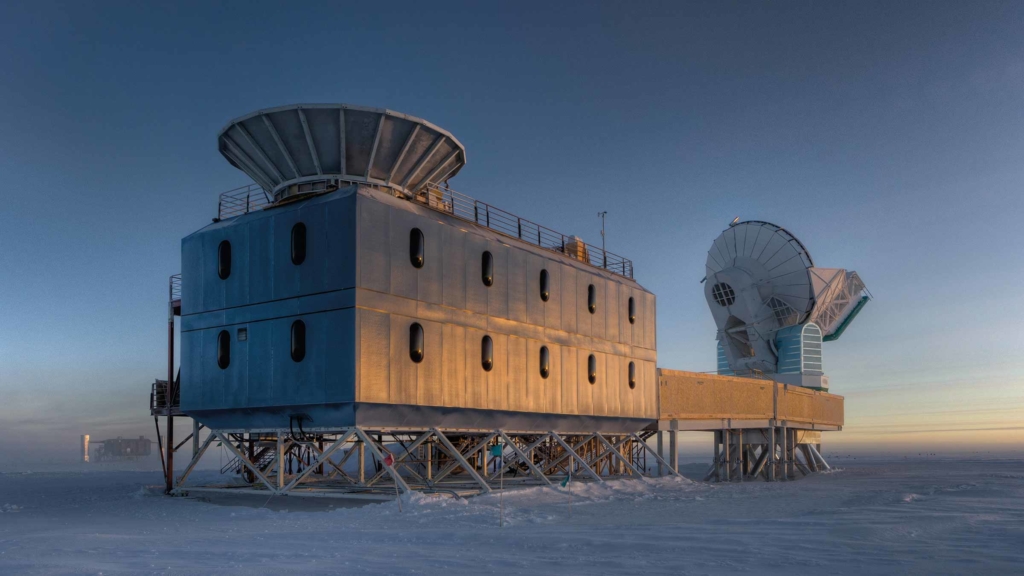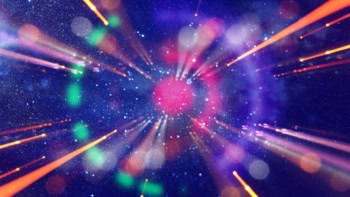Tushna Commissariat reviews Losing the Nobel Prize: a Story of Cosmology, Ambition, and the Perils of Science’s Highest Honour by Brian Keating
I’ve been a science journalist for the past seven years. In that time, I’ve covered my fair share of ground-breaking discoveries, such as the Large Hadron Collider’s discovery of the Higgs boson in 2012 and LIGO’s first detection of gravitational waves in 2016. I’ve also covered controversial claims, like that made by researchers on the Opera experiment in 2011, who said they had seen faster-than-light neutrinos. But the most intriguing, and ultimately tragic, saga in modern physics was that of the BICEP2 experiment and its (as it turned out) non-detection of primordial gravitational waves. In Losing the Nobel Prize: a Story of Cosmology, Ambition and the Perils of Science’s Highest Honour, experimental astrophysicist Brian Keating tells this tale from an insider’s perspective.
These days Keating is director of the Simmons Observatory and is based at the University of California San Diego, but in 2006 he was the key researcher who conceptualized and designed the original Background Imaging of Cosmic Extragalactic Polarization (BICEP) experiment. Its purpose was to detect the polarization of the cosmic microwave background (CMB), and it served as a successor to the BOOMERanG experiment, which measured the CMB’s radiation. While Losing the Nobel Prize tells the story of BICEP and BICEP2, it is also three books all packed into one long (sometimes confused) narrative.
First and foremost, the book is an autobiography of Keating – his life, his work, his family, his religion and his colleagues all feature greatly in this tale. A few relationships in particular stand out. There’s Keating’s father, who left the family while his son was still a young child, and who he reconnects with later and has a deep relationship with until his death in 2005. We also read about Keating’s close collaborator and mentor Andrew Lange, the principal investigator of BOOMERanG, who sadly died by suicide in 2010, just as BICEP2 was deployed. Keating talks openly about his grief at the situation and his frustration at why Lange didn’t reach out for help.
Another person Keating mentions throughout is Galileo. Keating seems to identify with Galileo from a very young age, reading about Galileo’s work and discoveries, and the astronomer’s own struggles with dust. But beyond that, Keating keeps mentioning the Italian polymath, charting situations in his own life and work against that of Galileo’s numerous times. Occasionally, this comes off as egotistical, but I think that Keating invokes Galileo in an almost talismanic way, rather than deeming himself Galileo’s equal.
Problem prize?
Keating also does what he says on the tin, and spends several chapters talking about the history and background of the Nobel prize, its influence on him personally and science in general. Indeed, the book’s introduction is a vivid description of the Nobel family, including Alfred Nobel and how the prize came to be. This is woven in with Keating’s closest brush with the award – an invitation from the Royal Swedish Academy of Sciences to nominate a discovery or invention for the 2016 physics prize. A large chunk of the book is about the prize and its problems from Keating’s point of view, with the author willingly admitting that many may see this whole book as a case of sour grapes on his part. What Keating does is openly acknowledge his near-obsession with winning the prize for a large part of his career despite claiming that it’s an affliction that most – if not all – scientists suffer from too. He eventually comes to terms with the fact that he won’t, simultaneously noting the many problems with this most well-known of prizes.
Keating openly acknowledges his near-obsession with winning the prize for a large part of his career, before coming to terms with the fact that he won’t
In this part of the book I found myself agreeing with Keating on many points – the Nobel’s arbitrary rules about not awarding it to more than three people; its severe lack of female laureates, especially in physics and chemistry; not to mention the rather insular and secretive way in which nominations and nominees are handled by the Academy. But at other times I wasn’t quite sure what his point was. For example, Keating talks as if no other prizes or honours exist in the sciences, or that every large physics collaboration today is working towards a Nobel in fierce competition with others. He also compares the Nobel prize both to the Olympics and the Oscars, which I found a bit bizarre. Finally, he makes the claim that the prize is “broken” and that if Alfred Nobel (who he describes multiple times as an idealist) were to come back today, he “might be shocked at how far we’ve strayed from his dreams for a more peaceful world catalysed by his prizes”. This was a bold claim to make and I’m not sure Keating has the data to back it up, especially as at no point in the book does he speak to anyone involved in executing the Nobel estate or from the Academy. Towards the end of the book, Keating suggests five ways to reform the “church” of Nobel. Some are obvious, such as adding prizes in other scientific disciplines, but others, including the suggestion that prizes should be given “primarily for unexpected discoveries”, do not make sense to me.
Dusty lens
At this point, I feel like I can finally talk about the one remaining aspect of the book – the science! This can be broken down into two parts – cosmology in general, and BICEP in particular. Keating spends a chapter or two talking about the birth of the universe, the CMB and its discovery, before getting into polarization and inflation – the supposed period of very rapid expansion of the early universe. When it comes to the story of BICEP and BICEP2, the author describes how he was involved in coming up with the original experiment, but also how his decision to later also be a part of a competing experiment (POLARBEAR) meant that he was relegated to the footnotes of BICEP2 history.
In the week before BICEP2’s big announcement on 17 March 2014, rumours were already rife, and on that fateful Monday, scores of physicists and journalists listened to the jubilant press conference. The fact that physicists had found actual evidence for inflation was amazing, and as I penned my headline an hour and a half later – “BICEP2 finds first direct evidence of cosmic inflation” – I was suitably impressed. The team claimed that its experiment had spotted the first evidence for the primordial “B-mode polarization” of the CMB. Theory suggests that this polarization is a remnant of gargantuan primordial gravitational waves that would have abounded in the early universe, had it undergone inflation. This concept was first proposed by Alan Guth and Andrei Linde in the 1980s. Their proposal was both popular and poetic, and is still a widely accepted solution by most cosmologists.
By the end of the press conference, researchers the world over were rushing to praise BICEP, and a Nobel prize was already being mentioned. The one slight niggle that I remember having on this exciting afternoon was the fact that the team’s paper – titled “BICEP2: Detection of B-mode polarization at degree angular scales – had not yet been peer reviewed or assessed by anyone outside of the BICEP2 team.
Before I could assuage my own doubts, I got a rather unexpected phone call from Neil Turok, director of the Perimeter Institute in Canada. I had reached out to him via e-mail for his views on BICEP2’s findings, having contacted several cosmologists as I intended to write a follow-up piece the next day, full of what I assumed would be praise. But Turok wanted to speak with me about some issues he had with the news. After an hour of speaking with him, I was left dazed and confused. Turok was convinced that something was amiss with BICEP’s observations, when taken into consideration with previous measurements made by both the WMAP and Planck experiments. His other worry was that BICEP’s signal could be contaminated due to interstellar dust in our galaxy.
As it turned out, Turok was bang on the money with his prediction about dust, but it would take nearly a year for BICEP2 to officially retract its discovery. In the book, Keating spends three chapters – “Elation!”, “Inflation and its discontents” and “Deflation” – outlining the whole story, so if that is specifically what you are after, I’d suggest skipping forward to them. Particularly interesting to read about were Keating’s initial misgivings about the BICEP2 team’s idea to lift an unofficial Planck slide from a PowerPoint presentation, after being denied an official dust map from the Planck collaboration, which could have potentially scooped BICEP2. Keating describes their rivalry in detail and I was surprised by how guarded both collaborations were to begin with, all in the hopes of being the one to bag a Nobel prize, if Keating is to be believed.

Galactic dust sounds death knell for BICEP2 gravitational wave claim
On 22 September 2014, as I wrote a much more pessimistic headline – “BICEP2 gravitational wave result bites the dust thanks to new Planck data” – I couldn’t help but feel sorry for the whole BICEP2 team. As it happened, the polarized emission from dust across the sky was much more significant than BICEP2 had allowed for, or than was evident from that one purloined PowerPoint slide of Planck data. Apart from the fact that the detection was not what it seemed, the whole situation inadvertently created a furore over the scientific process. There were the rather presumptuous celebrations from the team and the wider scientific community; the now cringe-worthy video they filmed telling Linde about the “discovery”, complete with clinking champagne glasses; and most importantly, the fact that BICEP2’s results had not been vetted by anyone outside the team. Much debate followed about how breakthroughs should be announced, be it to the scientific community or the world at large.
Keating does admit culpability for many of the team’s decisions (especially when it comes to the dust data), writing that “it was BICEP2’s vision which was clouded: a bit by fear, a bit by greed and mostly by bits of dust”. At the same time, he maintains until the end that the BICEP2 signal was true, and that it was a matter of erroneous interpretation.
Whether you agree with him or not, Losing the Nobel Prize makes for an interesting read. If you are not a part of the scientific community, it will offer you a window into science as it is done today, warts and all.
- 2018 W W Norton 352pp £20hb




